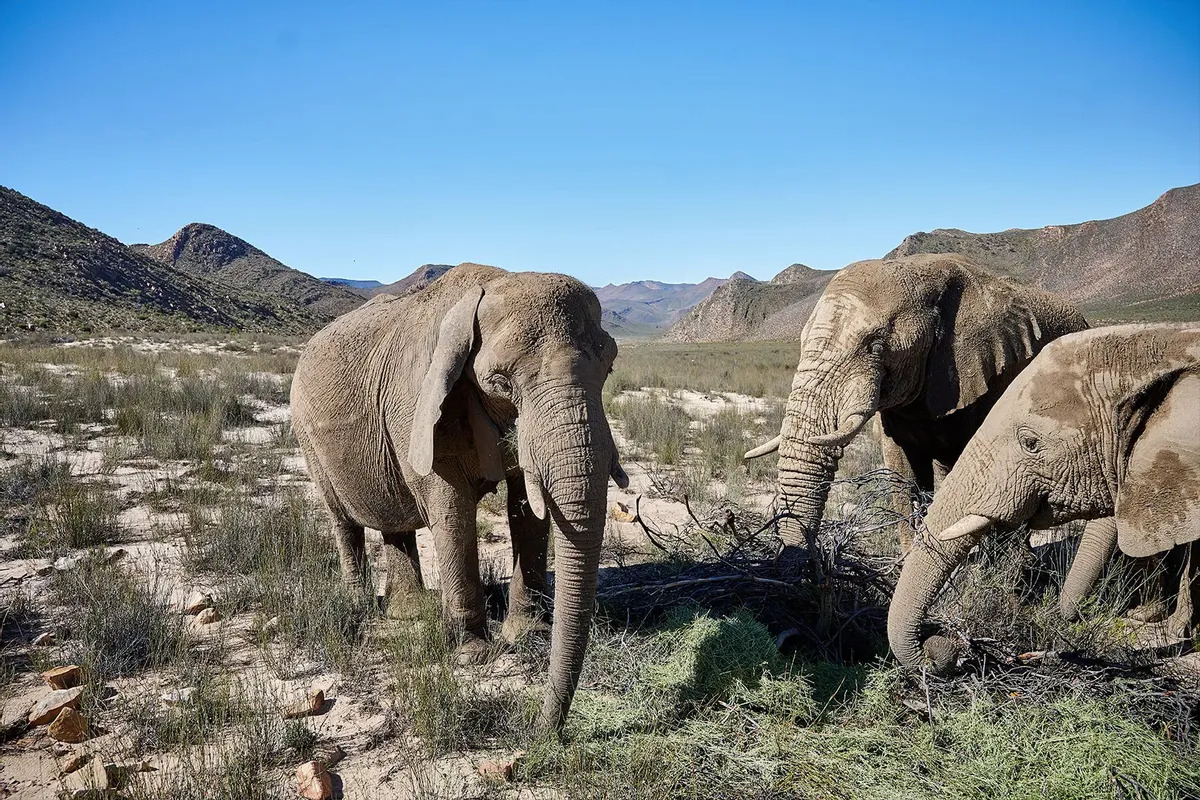African Savannah Elephants: Masters of Multimodal Communication Revealed in New Study

A recent study sheds light on the intricate communication methods of African savannah elephants (Loxodonta africana), showcasing their remarkable ability to convey detailed thoughts through a complex interplay of senses.
Renowned as the world's largest terrestrial animals, African savannah elephants stand between 10 to 13 feet tall and weigh between 4 to 7 tons. Among them, Doma, a dominant male, has gained notoriety not only for his sheer size but also for his charisma and kindness, which endears him to his herd. Observations reveal that other elephants in his group often seek his guidance, running to him in times of trouble and displaying signs of submission during calmer moments.
Vesta Eleuteri, a PhD student at the University of Vienna's Department of Behavioural and Cognitive Biology, had a unique encounter with Doma during a moment of courtship between the dominant male and a playful female named Kariba. "I found myself a meter away from a greeting between Doma and Kariba and could feel the rumbles echoing in my body and smell the elephants (and even secretions!) so close," Eleuteri shared.
Eleuteri's insights into elephant behavior stem from her research at the Jafuta Reserve in Zimbabwe, where she and her team studied semi-captive elephants. Their findings, published in the journal Communications Biology, unveil the sophisticated communication strategies employed by elephants, termed "multimodal communication."
As elephants rumble, flap their ears, rub their trunks, and release pheromones, they engage in a silent yet intricate exchange of visual, audible, and tactile gestures. Contrary to previous notions of chaotic behavior, elephants are shown to construct elaborate "sentences" to convey nuanced thoughts.
Eleuteri elaborated, stating, "We found that elephants greet by appropriately targeting visual, acoustic, and tactile gestures at their audience depending on the audience's state of visual attention. This capacity parallels human communication strategies, reflecting the elephants' cognitive complexity."
While various animal species utilize multiple senses for communication, elephants stand out for their exceptional proficiency in multimodal communication. Their ability to convey detailed messages underscores the depth of their social interactions and underscores the importance of conservation efforts to protect these intelligent creatures.
Despite facing threats such as ivory poaching, habitat loss, and climate change, Eleuteri remains optimistic about the elephants' future. "I still have hope that elephants will manage to survive, and there are amazing people working hard for elephants and their future," she expressed. "Raising awareness about their ecological significance and vulnerability is crucial in garnering support for conservation initiatives."
While the prospect of decoding elephant language may seem enticing, Eleuteri acknowledges the mysteries that may remain. "Whether we will be able to decode their communication and use it to communicate directly with them is something I am not sure about," she remarked. "Some things may remain a mystery, adding to the allure of these magnificent creatures."





